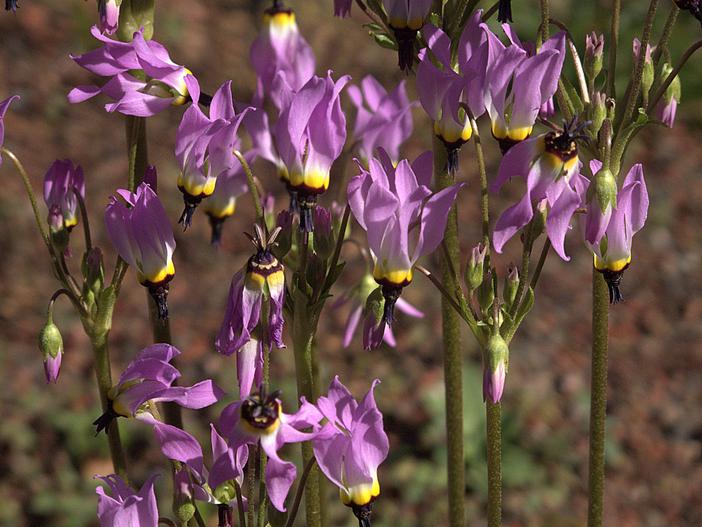Padre’s Shootingstar
(Dodecatheon clevelandii subsp. insulare)
Padre’s Shootingstar (Dodecatheon clevelandii subsp. insulare)
/
/

John Rusk
CC BY 2.0
Image By:
John Rusk
Recorded By:
Copyright:
CC BY 2.0
Copyright Notice:
Photo by: John Rusk | License Type: CC BY 2.0 | License URL: https://creativecommons.org/licenses/by/2.0 | Uploader: Josve05a | Publisher: Wikipedia Commons


Estimated Native Range
Summary
Dodecatheon clevelandii subsp. insulare, commonly known as Padre’s Shootingstar, Island Shooting Star, or Cleveland’s Shooting Star, is a perennial herb that is native to central and Southern California, including the Channel Islands. It thrives in a variety of habitats including coastal bluffs, grasslands, and oak woodlands, where it forms part of the unique island ecology. This species typically grows at a moderate rate to a height of 0.5-1.5 feet (0.15-0.5 meters) and features a basal rosette of leaves from which emerge slender, upright flowering stems. The flowers are quite distinctive, with reflexed petals and a prominent central stamen cluster, ranging in color from pink to magenta. They are quite showy and bloom in the spring, adding a splash of color to the landscape.
Padre’s Shootingstar is valued for its striking flowers and ability to attract pollinators such as bees. It is used in native plant gardens, rock gardens, and as part of wildflower meadows, where it can provide early-season interest. This plant prefers full sun to part shade and adapts well to a variety of soil types, including clay, loam, or sandy soils, provided they have medium to fast drainage. While it requires medium amounts of water, it is somewhat drought-tolerant once established. It is not commonly reported to have serious disease or pest problems, but slugs and snails may occasionally feed on the foliage.CC BY-SA 4.0
Padre’s Shootingstar is valued for its striking flowers and ability to attract pollinators such as bees. It is used in native plant gardens, rock gardens, and as part of wildflower meadows, where it can provide early-season interest. This plant prefers full sun to part shade and adapts well to a variety of soil types, including clay, loam, or sandy soils, provided they have medium to fast drainage. While it requires medium amounts of water, it is somewhat drought-tolerant once established. It is not commonly reported to have serious disease or pest problems, but slugs and snails may occasionally feed on the foliage.CC BY-SA 4.0
Plant Description
- Plant Type:
- Height: 0.5-1.5 feet
- Width: 0.5-1 feet
- Growth Rate: Moderate
- Flower Color: Pink, Red
- Flowering Season: Spring
- Leaf Retention: Deciduous
Growth Requirements
- Sun: Full Sun, Part Shade
- Water: Medium
- Drainage: Fast, Medium
Common Uses
Bee Garden, Bird Garden, Butterfly Garden, Hummingbird Garden, Low Maintenance, Rock Garden
Natural Habitat
native to central and Southern California, including the Channel Islands
Other Names
Common Names: Island Shooting Star , Cleveland’s Shooting Star
Scientific Names: Dodecatheon clevelandii subsp. insulare , Dodecatheon cleavelandii var. insulare , Dodecatheon clevelandii var. insulare , Primula clevelandii var. insularis
GBIF Accepted Name: